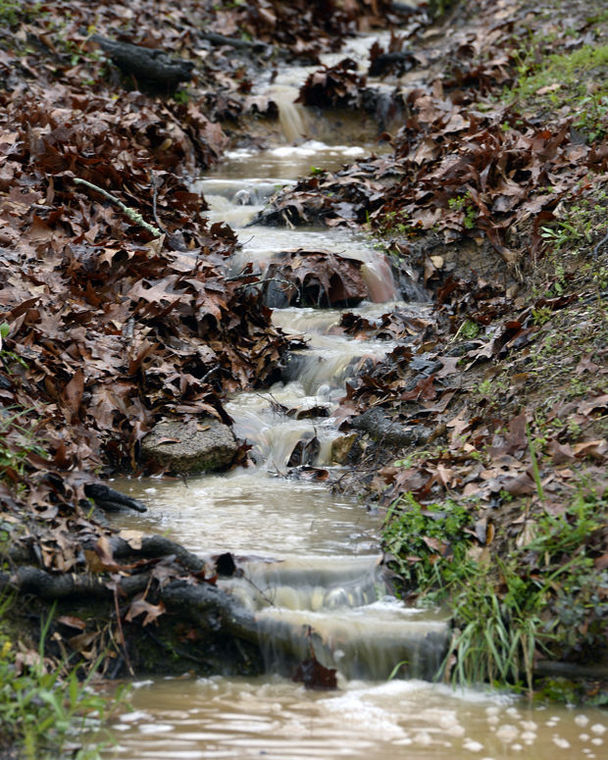Streams and rivers also receive freshwater from runoff of the Earth's surface. Some precipitation falling on land is collected by vegetation and returns through transpiration, is evaporated, or infiltrates the soil and becomes groundwater (USGS 2013d). The rest of the precipitation that falls on land hits saturated or impervious ground and flows downhill (USGS 2013d). Weather, physical geography, and topographic features of the land affect surface runoff. Water may flow from small creeks into larger creeks, streams, rivers, and often along the coast, into an estuary. Many times runoff collects the organisms, nutrients and sediments upon which it flows and these materials are suspended in the flowing water. These materials often settle out once the flow of water slows creating mud flats or sand bars in estuaries.

As human population continues to increase so does the demand for fresh water. As demand for fresh water by humans increases, so does the removal of fresh water from streams, rivers, and underground water systems before it reaches the coast. Population growth also leads to more urbanization and development projects. Often natural landscapes are replaced with impervious surfaces, or surfaces that cannot be penetrated, including highways, roads, and buildings (USGS 2013d). Surface runoff cannot infiltrate the soil or become incorporated into groundwater. The rate of the flow may increase or decrease depending on what surface it flows over (USGS 2013d). For example concrete increases the flow of runoff while vegetation can slow the flow rate. Impervious surfaces such as concrete increase the rate of flow into drainage systems and streams. On impervious surfaces, the surface runoff from snow melts or storm events flows into streams at a higher volume and over a shortened amount of time.
The changes the frequency, duration, and extent of flows and can cause adverse effects including flooding of streams and rivers (USGS 2013d). Floods cause overflows of streambeds and often time the flooded water evaporates upstream before reaches the coast (USGS 2013d). Changes in surface runoff caused by altered landscapes decreases the amount and change of the physical characteristics of freshwater inflows into an estuary.